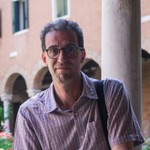
João Pedro Conde
JPC is currently a Professor in the Department of Bioengineering of Técnico, a Senior Researcher and Co-Group Leader of INESC MN (www.inesc-mn.pt), and the Coordinator of the Institute of Nanoscience and Nanotechnology. His current research focuses on: (i) thin-film silicon micro and nanoelectromechanical systems; (ii) microfluidic biochips for biosensing; and (iii) cell chips for medical research.
From sample to answer: Biochip with integrated sample preparation and optical detection
Detection of bioanalytes (such as DNA, proteins, cells, metabolic products) is a central aspect in medicine, food safety, environmental control, etc. I will start by describing our research involving the use of thin-film silicon photodetectors as optical transducers in integrated microfluidic biochips. These transducers are integrated with molecular recognition elements capable of specifically capturing the bioanalyte of interest. I will discuss the strategies that we use for this integration, and how the characteristics of the biosensor relate to the sensitivity of the detection in a microfluidic lab-on-chip system.
To take full advantage of the miniaturization of the biosensor, it is crucial in addition to address two other issues: (i) fluidic handling from sample to sensor and (ii) consideration of the interfering effects of the often chemically and physically complex biological sample matrix. I will use our work on the detection of a toxin (ochratoxin A, OTA) produced by fungi that contaminate several sources of food and drink as a case study of an integrated lab-on-a-chip analytical system. I will finish with a brief discussion of our work in progress relating to the detection of miRNA and proteins as medical biomarkers.
